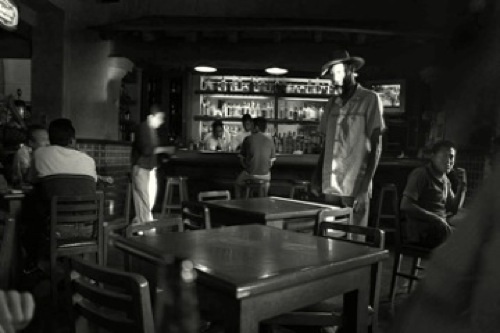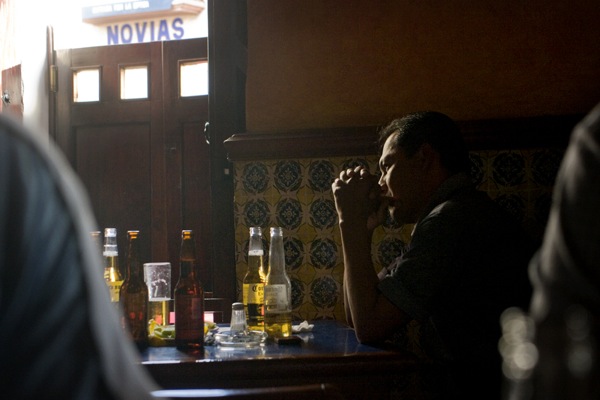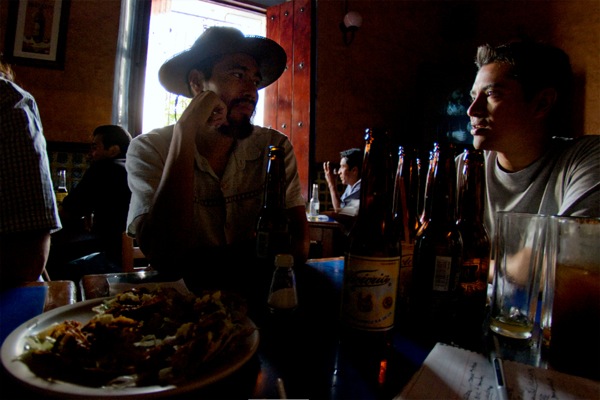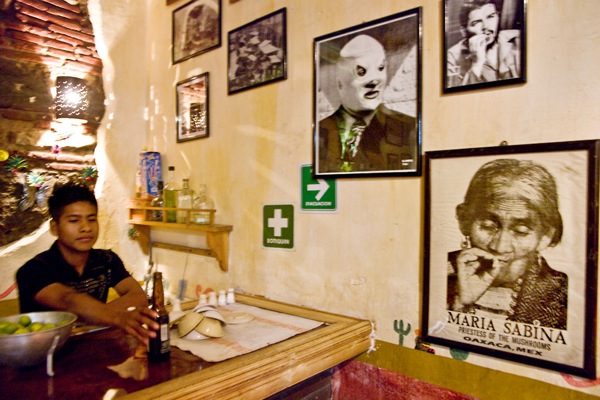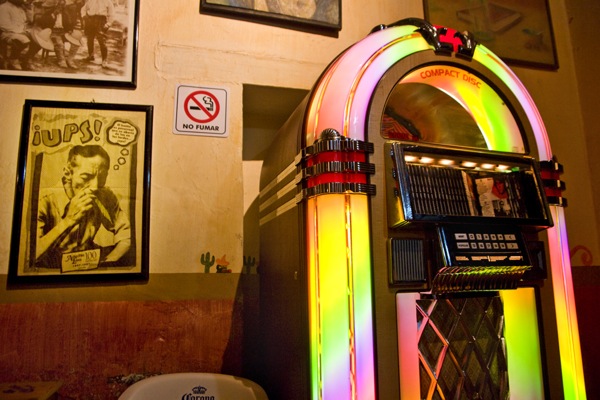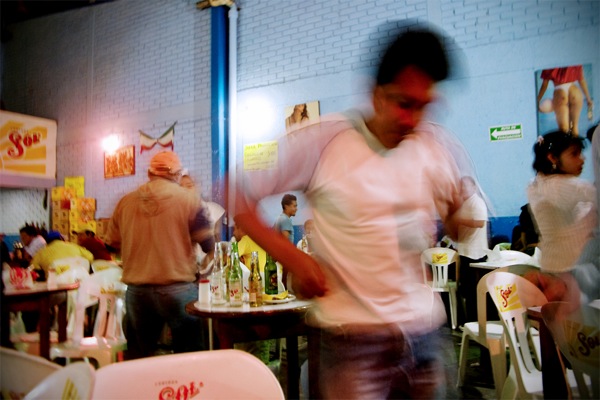Editor’s Note: This is the first in a three-part series on Mexican cantinas. Stay tuned for the next two pieces, to be published this week on Nights.
It is a little past four in the afternoon, and Mexico’s great cobalt sky has faded to a pale blue-white, with tired clouds slipping along its domed edges. The wooden doors of the cantina give the creaaak-crreeaak of rusty springs as they swing behind us; they are the flimsy barrier between the outside world of the street and the inside world of men and booze.
